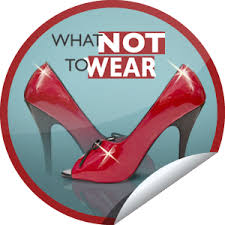Yesterday was a day of promotions!
My husband Jason got promoted to blue belt! Our teammate Dwayne got promoted as well.
(Note: My husband is not a midget. Dwayne is just really, really big).
And I got a very unexpected 2rd stripe on my blue belt, to boot!
Jason felt the same way I did after getting my blue belt. It's good to be a blue belt, but it's freaking
great not to be a white belt anymore. You can finally feel just a little bit legitimate. I am very happy for my best training partner!

Besides these promotions, we have been busy training for the no gi Pan Ams. And on that note, I'd like to take a moment to discuss an important, but often overlooked issue. How not to get your ass disqualified.
 |
| DQed!! |
It's one thing to lose because someone is better than you. It's another thing to lose because of an entirely preventable mistake. I've done 2 IBJJF tournaments and I've come pretty darn close to getting DQed twice - once for almost not making weight and once for not having my uniform quite right. This time, however, I'm determined to do everything by the book - the IBJJF rule book, that is. I've scoured its contents and used those, along with my own observations and experiences, to come up with a list of key points to prepare yourself to NOT get disqualified.
1. First, the most obvious. Don't be late. When they call your division to the bull pen, you need to be there. Period.
2. Also pretty obvious - don't do illegal moves. Know what is legal or illegal in your division. Different submissions are legal based on skill level, age, and whether the competition is gi or no-gi. Know what is legal for you.
3. Don't be overweight. You get only one chance to weigh in on the official scale. If you are overweight, you will not get bumped up a weight class - you will be immediately disqualified. You get unlimited chances to weigh in on the practice scale, however, so there is no excuse for not making your weight class. Bring a jump rope and some sweats so that you can sweat out a pound or 2 if need be. But know that you will compete within minutes of weighing in, so you really don't want to sweat out more than that. It's important to register at a weight class that you can realistically make and to diet appropriately in the weeks before the tournament.
**warning** the official and practice scales might not be exactly the same. There is a certain amount of error to be expected when you are weighing in on 2 different scales. At the mundials, the practice scale was .5 lbs lighter than the official one. I would recommend weighting in at least .5 lbs underweight on the practice scale, just to be safe.

4. Make sure your uniform is up to the strict, sometimes arbitrary standards of the IBJJF. You don't want to find a picture of yourself in the "what not to wear" section of Gracie Magazine. Standards are enforced inconsistently, so if there is any doubt at all whether your uniform is up to standards, assume that it is not.
Also, wear underwear. "When an athlete is not wearing an undergarment under his/her gi and this fact comes to the referee’s attention," that athlete is disqualified. Furthermore, "in the female division, the use of thong-type undergarments is not permitted; only briefs-type undergarments." I don't know how the IBJJF refs would know whether I am wearing a thong or briefs under my fight shorts, but I can't think of a more embarrassing thing to get disqualified for. And for the fellas, no cups are allowed. But don't let this scare you - if you sustain a serious genital injury, you might get the IBJJF to give you a free entry into next year's tournament.

5. In a no-gi tournament, don't grab your opponent's clothes. Last year during a match, my opponent's rash guard ran up her torso, and without thinking about it, I pulled it down for her. The ref issued me a strong warning. If points and advantages had been tried at the end of the match, this would have been enough reason for me to lose.
6. Don't tap by accident. The IBJJF lists the following as forms of submission:
"When an athlete taps twice with his/her hand on the opponent, ground, or his/herself in a clear and apparent manner.
When the athlete taps the ground twice with his/her foot, when arms are trapped by opponent.
When the athlete verbally withdraws, requesting the match be stopped.
When the athlete screams or emits noise expressing pain while trapped in a submission hold."
So don't yelp unless you mean it. And if you make your opponent cry during a match, do not tap her shoulder to comfort her (Kristina!). One of my training partners lost a match this very way.
7. Don't lose control of bodily fluids. Disqualification will result "when an athlete presents bleeding that cannot be contained after being treated by the doctor on 2 (two) occasions" or "when an athlete vomits or loses control of basic bodily functions, with involuntary urination or bowel incontinence."
I change my mind about what I said about thongs. There
is a more embarrassing cause for disqualification. Don't eat a heavy breakfast.
8. And if all else fails, be more Brazilian. There is a certain amount of subjectivity at play in the enforcement of these rules. Whether or not it is true, there is a widely held belief that Americans are judged a little more strictly at these tournaments. Because all things being equal, Brazilians are supposed to win at Brazilian jiu jitsu. So if you want an extra layer of protection, convince the refs that you are a bona fide, jiu jitsu bred, my uncle's last name is Gracie, Brazilian. Add an "o" or "a" to the end of your name. Help yourself to an acai bowl. Sprinkle "oss" into your dialogue. And kick a lot of jiu jitsu ass.























